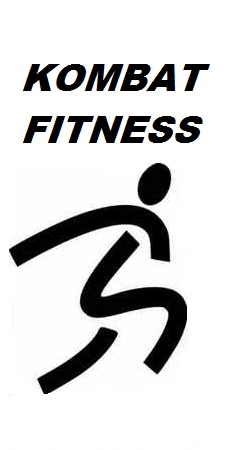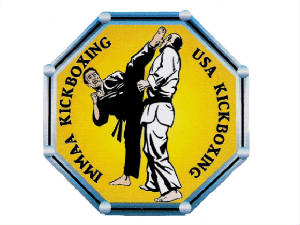THERE ARE NO REFUNDS! ALL SALES ARE FINAL!
Are you ready to test?
Please see fees below. Your name and rank will be proudly posted on our website for reference under the "Members" section.
Testing:
A student may Test in person (at a seminar) or send a Video Test (VHS or DVD) to receive a Validated rank for the training they have completed. Upon passing the test, the student will receive a "Verified Rank" from the KCAF. With this method we will be able to fully validate your techniques and credentials and they will be accepted world-wide.
You may send us your video test in sections or all at once. And there are no time limits to video test...Ever!
Flat Fees:
*Video Test (All Instructor Courses): $150.00
*KCAF School Chartership: $150.00 per year!
~Charter membership makes you an official KCAF Representative in your town including benefits such as; KCAF charter certification, use of our logos, 10% off all Test & Seminar fees. This is Not a school License!
*KCAF General Membership: $100.00 per year!
~General membership includes an KCAF member's certificate, 5% off all Test & Seminar fees This is Not a school License!
*KCAF Student Membership: $50.00 (One time fee)
All active KCAF Instructors are required to register each of their students with the KCAF!
*Soke/Founder Certification: $100.00
~You are required to provide us with a video or a manual of your system!
*Certificate of Recognition by the KCAF: $100.00
~If you have a ranking under a Martial Arts Association that you have left or has closed down and you want your belt rank/credentials recognised under the KCAF, Simply email us a copy of your rankings and pay a one time fee for each belt rank/credential you want recognised!
TESTING FEE: $100.00
*Kombat Fitness International School Chartership: $80 Per Year!
Become an official Kombat Fitness Representative in your town! Includes
one free Private lesson with Master-Troy Burchett at his Studio in Kentucky,
& makes you eligible to host Master-Troy For Martial Arts/Fitness certification seminars!\
Ways to Order:
*PayPal (only)
I*********************************************************************************************************************************
BASIC KOREAN TERMINOLOGY
OPEN AND CLOSE OF CLASS
| Charyut | attention |
| Kuki aye | face the national flags |
| Kyung yet | salute (hand over the heart to the flags) |
| Baro | return |
| Sabom-nim aye | face the instructor |
| Kyung yet | salute (bow to instructor) |
NOTE: Now days it is customary in Korea to salute the flags with the hand to the heart and to salute the instructor with a bow.
COUNTING - Korean version
- hana
- dul
- set
- net
- dah sawt
- yaw sawt
- ilgop
- yaw dawl
- ah hope
- yawl
COUNTING - Chinese version
- ill
- eeh
- sahm
- sah
- oh
- yuke
- chill
- pahl
- khoo
- ship
MARTIAL ARTS
| Tae kwon do | foot hand way | kicking and striking with the hand and foot |
| Kong Soo Do | empty hand way | old style of Taekwondo |
| Hap ki do | unity energy way | joint locks and takedowns, with some striking |
| Yudo (Judo) | gentle way | throws and ground fighting |
| Sim Mu Do | heart martial way | a blend of all of the above |
| Sul | technique |
|
| Hoshin-sul | self-defense technique |
|
| Kwon-sul | striking technique |
|
| Chey-sul | throwing technique |
|
| Mugi-sul | weapons technique |
|
| Kom-sul | sword technique |
|
| Bong-sul | stick technique |
|
| Khal-sul | knife technique |
|
| Chong-sul | gun technique |
|
FORMS TRAINING
| Charyut | attention |
| Kyung yet | salute - bow to instructor, or hand over art to the flag |
| Joon bi | ready |
| Shee jak | begin |
KongSooDo Style Color Belt Forms:
- Kibon Hyung (basic form, 1-5 forms)
- Pyung Ahn (peaceful mind, 1-5 forms)
- Chulgi (iron horse, 1-2 forms)
OTHER TERMS
| Do jang | training hall |
| Chae yook kwan | fitness center (common term for martial arts school in Korea) |
| Dobok | uniform: do-way bok-clothing |
| Dee | belt |
| Gup | grade (for white and colored belt students) |
| Dan | rank (for black belt holder) |
| Deh Han Min Kook | Republic of Korea. This is usually shortened to “Deh Han” which means the same. |
| Hyup Hae | association (often shortened to Hae) |
Below is a listing of several Korean martial arts associations with similar titles:
| Deh Han Simmudo Hyup Hae | Korea Simmudo Association |
| Deh Han Taekwondo Hyup Hae | Korea Taekwondo Association |
| Deh Han Hapkido Hyup Hae | Korean Hapkido Federation |
| Deh Han KyukTooKi Hyup Hae | Korea KyukTooKi Association |
| Deh Han Yudo Hyup Hae | Korea Yudo Association |
PERSONAL TITLES
Some people may be led to believe that the term "KwanJangNim" means grandmaster. In some martial arts circles today this title is used with such reverence as to keep us in awe of the great and almighty "KwanJangNim".
If you take a close look at the Korean language you’ll find the following information to be true:
Kwan is actually a suffix of the term “chae yook kwan” a common term in Korea used now days for "dojang".
Chae yook means fitness athletic training, physical education, or Chae yook kwan means fitness or athletic center.
Kwan is also the suffix of "toh suh kwan" meaning library, "pang muhl kwan" meaning museum, or "mee sul kwan" meaning fine art museum.
Jang means director with nim as a common respectful suffix. Therefore, kwan jang can be the title for the director of a library, a museum, an art center, as well as the owner of a martial art school (with "nim" added for appropriate referral of respect).
The idea that "kwanjang-nim" means master or grandmaster most likely comes from a common standard among martial artists in Korea. That standard is to own a martial arts school one must be a 4th Dan black belt and is then called a "kwanjang-nim". The assumption is that kwanjang-nim means master, when it truly means the owner/director of a martial arts school commonly referred to as a chae yook kwans (fitness center).
Without owning a martial arts school, a 4th Dan and above would be referred to as a "sabom-nim". This is a title given to someone who is a qualified instructor of a particular subject of study that is usually sports related.
| Sonseang-nim: | teacher
|
| Sabom-nim: | martial arts instructor (in Korea 4th Dan and above)
|
| Kwan jang-nim: | owner of a martial arts school
|
| Chong kwan jang: | Means the head or chief Kwan jang. |
| Hae jang-nim: | president or head of an association
|
| Suseung-nim: | This is the actual Korean term for a student's master. This term is used only on a student to instructor level. It refers not to the ownership of a martial arts school, but to the student / instructor relationship. |
| Hakseang: | student |
| Taekwondo-in: | Taekwondo(ist) practitioner of TKD |
| Hapkido-in: | Hapkido(ist) practitioner of HKD |
| Yudanja-nim: | black belt holder |
GREETINGS
| How are you? Are you at peace? (casual) | Ahn young ha say yo? |
| How are you? Are you at peace? (formal) | Ahn young ha shim nee kkah? |
| I'm pleased to meet you | Pan gahp sum ni da. |
| Yes (either one is correct) | Ney or Yey |
| No | Ah nee yo |
| I am "name" | Chaw nun "name" im ni da. |
| Thank you. | Kam sa ham ni da. |
| You are welcome. | Chon man ney yo. |
| I'll see you again. | Ta shi man ah yo. |
| Good bye (to the person staying) | Ahn young hee gay ship shi yo. |
| Good bye (to the person leaving) | Ahn young hee gah ship shi yo. |
*********************************************************************************************************************************



